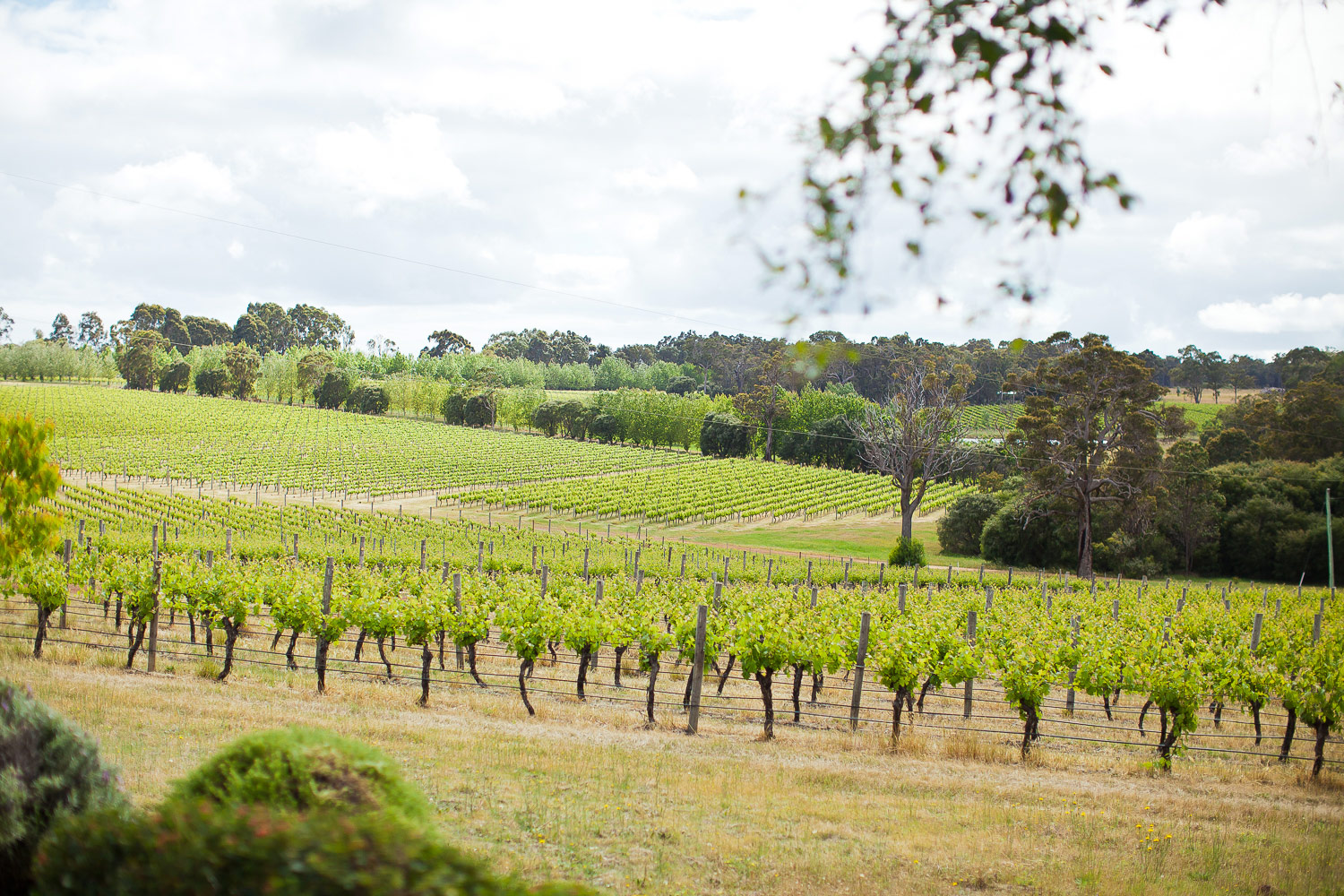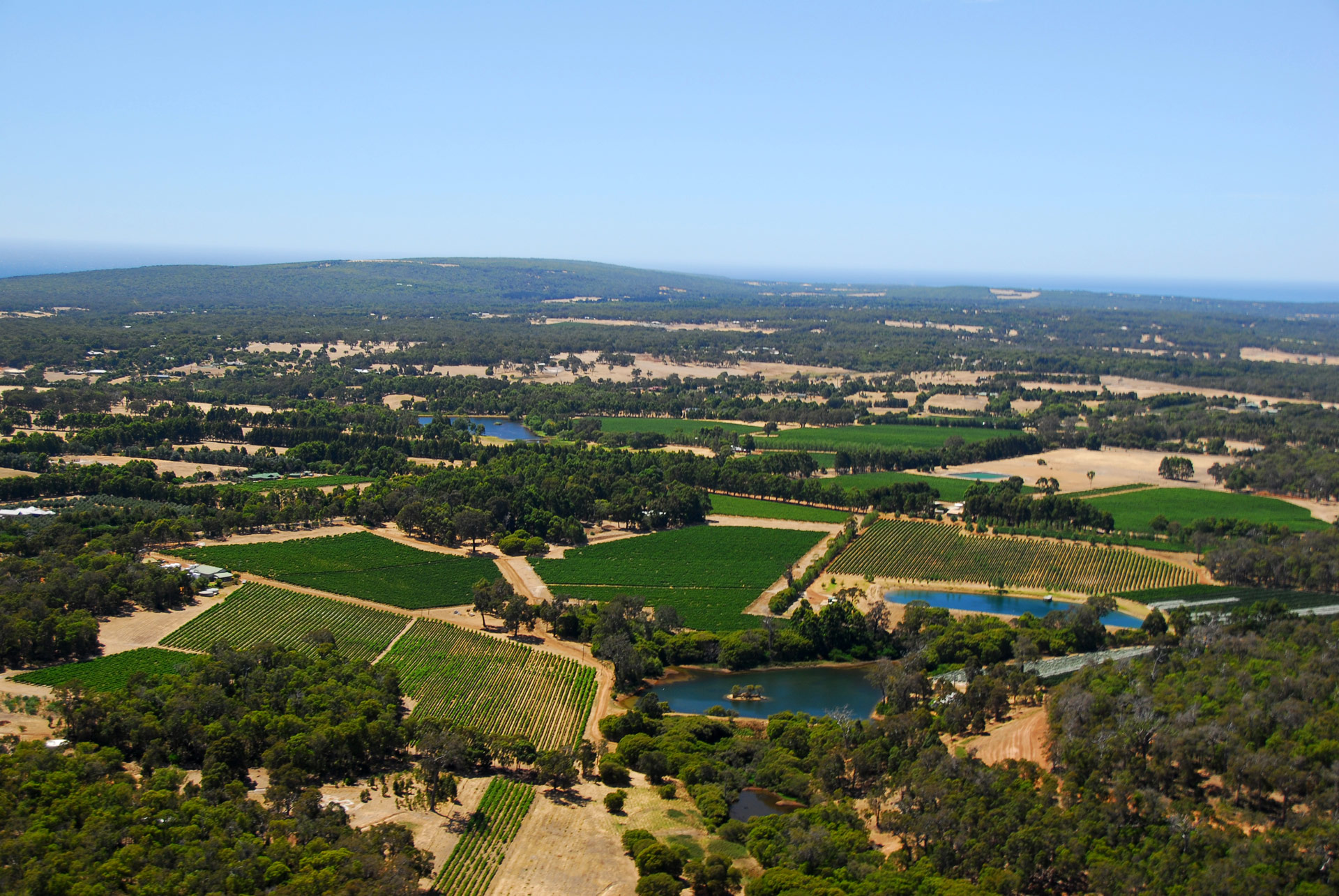Since its establishment in 2005, Deep Woods Estate has become a phenomenal success story, with the wines achieving numerous accolades, including three Max Schubert Trophies and the 2016 Jimmy Watson. The success of the wines has also seen Chief Winemaker Julian Langworthy collect several Winemaker of the Year gongs, largely due to the cabernet-based wines and chardonnay. But that success has been underpinned by the viticultural work of John Fogarty that has transformed a vineyard that had previously focused on yield over quality to one that produces some of the highest quality and most distinctive fruit in the Margaret River region.
The Deep Woods Estate vineyard in Yallingup was first planted between 1985 and ’87, with a new block established in 2020, taking the plantings to 14 hectares. All the vines are planted on own roots, with the varietal mix now consisting of cabernet sauvignon, merlot, cabernet franc, malbec, shiraz, tempranillo (which replaced verdelho), semillon and sauvignon blanc. The Fogarty family acquired the property in 2005, with Chief Viticulturist John Fogarty immediately working to fine-tune the vineyard for quality wine production, with extensive retraining and re-trellising, as well as a focus on building soil health.
“My job here is quite simple really,” says Fogarty. “It is to keep the vines producing the best quality fruit that is true to style. We have spent the past 16 years reworking what were poorly structured vines with previous owners looking to yield not quality, with many cabernet vines carrying over 8 metres of old cordons.”
The re-trellising and irrigation replacement program was completed this year, Fogarty notes, while a reduced use of herbicides and minimal soil disturbance have become key elements of their practices. “We have worked hard to increase soil carbon and organic matter with compost, cover crops and reduction of acidifying fertiliser use, replaced with softer fertilisers with additions of microbes and fungi to help restore soil health across the site,” he says.
Soil moisture monitoring equipment has also been installed across the vineyard, which allows the viticultural team to manage water use based on the information collected alongside real-time weather data. That data comes courtesy of an on-site weather station. Fogarty notes that their unique mesoclimate meant that general local weather information was unreliable, with the up-to-the minute and accurate information streamlining their irrigation practices and minimising water use.
Deep Woods has been a member of Sustainable Winegrowing Australia since 2019, utilising the benchmarking data to refine practices with the aim of being a certified member soon. Fogarty is also the current chair of the Margaret River Wine Association Sustainability Sub-Committee. “I want to help give back to the greater community around us,” he says. “I want to be proud of the amazing region we live and work in and ensure it is there for our children to enjoy in the same way we have. We have a great community within Deep Woods and Fogarty Wine Group and the whole community of Margaret River. I love to learn, and community is the best resource for this. If you think you know everything in this game, your time is up!”
Fogarty notes that soil health has been a key focus with less cultivation and more ground cover maintained. “We have allowed species that want to grow in the vineyard take the reins instead of introducing species with cultivation and seeding over and over again,” he says. “This allows a mixed species and really shows the variance across the site based on what is wanting to grow to allow us to support the areas in need.”
Encouraging the population of native species of plants over introduced one is an important focus, with the impact on beneficial local insect populations a bonus, aiding in the Integrated Pest Management program. And that’s something Fogarty wants to enhance in the future with an aim to establish insectarium shelters around the vineyard to increase native insect populations. “We have amazing remnant bush around the whole site which helps dramatically,” he says, “but increasing the diversity of native species to attract more beneficials to the site would be great.”
Fogarty believes their site is a unique one that is quite different to most of Margaret River and even those nearby in their northern pocket of the region. “The microclimate is really amazing, and the vineyard has quite a different orientation to most surrounding it with a lovely valley for drainage, and a north-east aspect,” he says. “The proximity of both Geographe Bay and the Indian Ocean site create an ultra-maritime climate, with the warmer Geographe Bay and the cold Indian Ocean having a great influence on the ripening of fruit. There are only a handful of vineyards in the region that are as close to both.”
That site produces wine, and cabernet in particular, of singular character. “The cabernet on the site always achieves full tannin ripeness and silky feel to the wines while retaining fresh fruit characters and violet lift, without ever gaining overripe characters,” Fogarty says, noting that improving the soil profile with compost applications and a permanent mid-row sward has only enhanced this expression, as well as helping to build resilience and a consistency across increasingly variable weather patterns.
“With better nutrition management, we have reduced the variability across vintages with the vines becoming more balanced and not pushing vegetative growth and unbalanced vines producing greener harder tannin wines,” says Fogarty. “More careful fruit thinning and placement of fruit allow optimum even ripeness, and I believe we have managed well over the years to increase fruit weight, colour and tannins. …There is nothing more satisfying than growing grapes to produce wine of this quality consistently, and I believe the wine quality and unique style of the vineyard is proving itself.”




